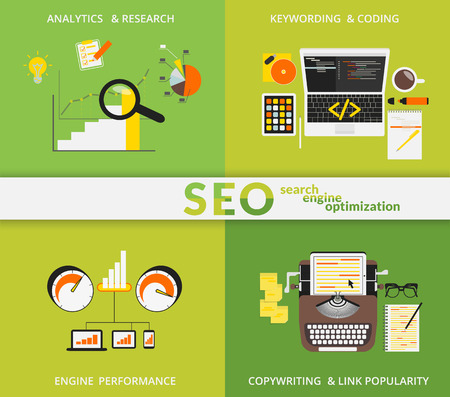Understanding On-Page SEO Basics
If you want your small business website to get noticed by customers in your local US market, mastering on-page SEO is the first step. On-page SEO refers to all the actions you take directly on your website to help search engines understand your content and rank it higher in search results. Unlike off-page strategies like backlinks or social media mentions, on-page SEO is entirely within your control. It includes optimizing elements like your headings, meta descriptions, internal links, and especially the structure and clarity of your content.
For small businesses competing with larger brands, nailing the basics of on-page SEO can make a real difference in how easily people find you online—especially when they’re searching for products or services near them. Search engines like Google use complex algorithms to determine which websites show up first when someone types in a local query. By organizing your website content strategically and making sure each page is tailored for both users and search engines, you increase your chances of appearing at the top of those crucial local search results.
In short, understanding and implementing on-page SEO isn’t just about pleasing Google—it’s about helping potential customers in your community discover what you offer faster and more easily than the competition.
Crafting User-Focused Page Structure
When it comes to optimizing your website for both users and search engines, how you organize your content is just as important as what you write. A user-focused page structure not only improves the overall experience but also helps search engines better understand your site. Here are some practical tips for structuring your pages in a way that works for everyone:
Logical Navigation: Make It Easy to Explore
A clear navigation system guides visitors to the information they need without confusion. Stick with simple, intuitive menus and avoid overwhelming users with too many options. Group related pages together and use descriptive labels that make sense to your local audience.
| Navigation Element | Best Practice | SEO Benefit |
|---|---|---|
| Main Menu | Limit to 5-7 primary items | Improves crawlability and user flow |
| Breadcrumbs | Display on every page | Enhances internal linking and context |
| Footer Links | Add essential links (Contact, About, Services) | Boosts accessibility and indexing |
Calls to Action: Guide Your Visitors
Your website should nudge visitors toward taking action, whether thats calling your business, filling out a form, or making a purchase. Place clear calls to action (CTAs) above the fold and at logical stopping points on each page. Use action-oriented language like “Get a Free Quote,” “Book Now,” or “Contact Our Team.”
CTA Placement Tips:
- Top of Page: Capture attention right away with a primary CTA.
- Mid-Content: Remind users of the next step as they read.
- Footer: Offer another opportunity before they leave the page.
Easy-to-Follow Layouts: Keep It Clean and Simple
A well-organized layout keeps visitors engaged and makes your content easier to digest. Use headings (<h2>, <h3>) to break up text, bullet points for lists, and short paragraphs. Leave plenty of white space so your pages don’t feel cluttered.
Quick Layout Checklist:
- Consistent Design: Use uniform fonts, colors, and spacing across all pages.
- Mobile Friendly: Ensure layouts work seamlessly on smartphones and tablets.
- Scannable Content: Highlight key points with bold text or callout boxes.
A thoughtful, user-focused page structure not only builds trust with your local customers but also gives search engines clear signals about what each page is all about. By organizing your site logically with easy navigation, persuasive CTAs, and straightforward layouts, you’ll set the stage for SEO success.
![]()
3. Optimizing Headings and Meta Tags
When it comes to on-page SEO, properly structuring your headings and meta tags is crucial for both search engines and users. Clear, keyword-rich titles and headers not only boost your site’s visibility but also help visitors quickly find the information they need.
Writing Effective Page Titles
Your page title (also known as the title tag) is one of the first things Google and potential customers see. Make sure each page has a unique, descriptive title that includes your main keywords—think about what your American audience would actually search for. For example, instead of “Home,” use “Affordable HVAC Services in Dallas | ABC Heating & Cooling.” Aim for around 60 characters to ensure the full title displays in search results.
Crafting Compelling Meta Descriptions
Meta descriptions don’t directly impact rankings, but they do influence click-through rates. Write clear, persuasive summaries (about 155-160 characters) that highlight your business’s unique value and include relevant keywords naturally. For example: “Get reliable plumbing repairs in Austin, TX. Fast response and local expertise from a trusted team.” Always write for real people—your goal is to encourage them to visit your website.
Using Header Tags Strategically
Header tags (H1, H2, H3, etc.) organize your content and make it easier to read. Use one H1 tag per page that clearly states the topic and includes a primary keyword. Break up sections with H2s, and use H3s or H4s for subtopics if needed. For instance, if you run a landscaping business, your headers might look like this:
- H1: Professional Landscaping Services in San Diego
- H2: Residential Lawn Care Solutions
- H3: Weekly Maintenance Packages
Pro Tips for Small Businesses
- Avoid “keyword stuffing.” Focus on readability and natural language Americans use when searching online.
- Add local terms (city names, neighborhoods) where appropriate to attract nearby customers.
- Regularly review and update titles and descriptions as your offerings or target market changes.
Bottom Line
Well-crafted headings and meta tags set the stage for effective on-page SEO. By using straightforward American English and integrating local keywords relevant to your small business, you’ll connect better with both search engines and your community.
4. Writing Content That Connects with Local Audiences
When structuring your website content for optimal on-page SEO, its crucial to create content that truly resonates with your local audience. In the US market, this means going beyond generic information and weaving in language, references, and solutions that feel familiar and relevant to American users. Here’s how you can tailor your content strategy for authentic engagement:
Use US-Centric Language and Terminology
Choose words, phrases, and spelling conventions that are commonly used in the United States. For example, use “apartment” instead of “flat,” “zip code” instead of “postal code,” and employ American spelling (like “color” instead of “colour”). This small detail increases trust and relatability.
Common US vs. UK Terms
| UK English | US English |
|---|---|
| Flat | Apartment |
| Colour | Color |
| Postcode | Zip Code |
| Lorry | Truck |
| Holiday | Vacation |
Address Local Pain Points Directly
Your content should speak directly to the challenges and needs faced by your target audience in their specific region or state. For instance, if you’re a plumbing company in Texas, mention concerns like hard water or heat-related plumbing issues. This not only boosts local relevance but also shows potential customers that you understand their unique situation.
Examples of Region-Specific Pain Points
| Region/State | Pain Point Example |
|---|---|
| California | Drought-related landscaping tips and water conservation methods. |
| Florida | Hurricane preparedness for homeowners. |
| Northeast US | Winterizing homes and dealing with snow damage. |
| Midwest US | Tornado safety for businesses and families. |
| Texas | Energy-efficient cooling solutions for extreme heat. |
Incorporate Region-Specific Information for Authentic Engagement
Add details such as local regulations, community events, or success stories from nearby customers to make your content feel authentic. Highlighting partnerships with local organizations or sharing testimonials from area clients can further reinforce your connection to the community. Remember, Google values localized content for SEO because it delivers more value to users searching within specific geographic areas.
5. Internal Linking and Content Hierarchy
Building a strong internal linking strategy is crucial for optimizing your website’s on-page SEO and providing an outstanding user experience. Internal links are hyperlinks that connect one page of your website to another, helping both search engines and visitors navigate your content more efficiently. When you set up effective internal links, you help Google understand the structure and importance of your pages, which can improve crawlability and boost rankings for key pages.
Why Internal Linking Matters
Internal links distribute authority across your website, passing “link juice” from high-performing pages to new or less visible ones. This helps ensure that important content isn’t buried too deep within your site structure. For small businesses in the U.S., smart internal linking means users can easily find what they need, reducing bounce rates and increasing engagement.
Best Practices for Internal Linking
- Use Descriptive Anchor Text: Instead of generic phrases like “click here,” use keywords that clearly describe the linked page’s topic.
- Link to Relevant Content: Make sure each link adds value for users, guiding them to related resources or next steps in their journey.
- Avoid Overlinking: Too many links on a single page can overwhelm users and dilute SEO value—keep it natural and focused.
Creating Clear Content Hierarchy
A clear content hierarchy helps both search engines and visitors understand how information is organized on your site. Start with broad topics at the top level (like main service or product categories), then break those down into more specific subtopics (such as individual services or blog posts).
How to Structure Your Hierarchy
- Main Pages: These are your homepage and primary category pages, serving as pillars for your site’s core topics.
- Subpages: Each main page should link to relevant subpages—think of these as supporting chapters under each main topic.
- Silo Structure: Group related content together in logical “silos” or sections, making it easy for users to dive deeper into subjects without getting lost.
Local Business Tip
If you’re targeting a U.S. audience, consider creating location-based pages (like city or neighborhood landing pages) and linking them back to your main service areas. This not only boosts local SEO but also makes it easier for American customers to find the information most relevant to them.
By combining strategic internal linking with a well-organized content hierarchy, you’ll make your website more user-friendly and increase its visibility in search results—helping your business grow in the competitive U.S. market.
6. Mobile Optimization and Readability
With most Americans browsing the web from their phones, making sure your website content is mobile-friendly isn’t just a nice-to-have—it’s essential for both users and on-page SEO. Here’s how you can ensure your content looks sharp and loads lightning-fast for people on the go.
Use a Responsive Design
Start with a responsive theme or framework that automatically adapts to different screen sizes. This ensures that your website looks professional whether someone is checking you out on an iPhone, Android, or tablet.
Keep Content Concise and Scannable
Break up large blocks of text into short paragraphs or bullet points. Use clear headings (<h2>, <h3>) to guide readers and help Google understand your structure. Americans want information fast—make it easy to find key points without endless scrolling.
Optimize Images and Media
Compress images so they load quickly but still look crisp. Use the right file formats (like WebP or JPEG) and add descriptive alt text for accessibility and SEO. Avoid autoplay videos or oversized graphics that slow down your site, especially on mobile data connections.
Prioritize Fast Loading Times
Aim for your pages to load in under three seconds. Use tools like Google PageSpeed Insights to check your performance and get specific recommendations. Consider lazy-loading images or using a content delivery network (CDN) to serve content faster across the US.
Make Buttons and Links Thumb-Friendly
Ensure clickable elements are large enough for fingers and spaced apart to avoid accidental taps. Clear calls-to-action (like “Contact Us” or “Get a Quote”) should be easy to spot and use on any device.
Test Across Devices Regularly
Don’t just rely on desktop previews—test your site on real smartphones and tablets, both Apple and Android. Tools like BrowserStack or Google’s Mobile-Friendly Test can help you catch issues before your customers do.
By focusing on mobile optimization and readability, you’ll not only improve user satisfaction but also boost your site’s ranking potential—helping you connect with more American customers wherever they are.
7. Monitoring, Updating, and Continuous Improvement
Optimizing your website content for on-page SEO isn’t a one-time task—it’s an ongoing process. American small business owners know that search engine algorithms and consumer behaviors change constantly, so it’s important to keep your content fresh and relevant. Regularly review your website analytics to identify what’s working and where there are opportunities for improvement.
Leverage Analytics for Insightful Updates
Tools like Google Analytics and Google Search Console are popular among U.S. small businesses because they provide actionable data about how visitors interact with your website. Use these insights to determine which pages are performing well and which need attention. For example, if you notice certain blog posts have high bounce rates or low average session duration, consider updating the content, adding new information, or improving internal links.
Implement User-Friendly Tracking Solutions
For those looking for even more user-friendly solutions, platforms like Squarespace Analytics and Wix Analytics are favored by many American entrepreneurs who use these website builders. These tools offer easy-to-understand dashboards that help you track visitor behavior without needing advanced technical skills.
Create a Routine for Content Updates
Set a schedule—monthly or quarterly—for reviewing your website performance and updating key pages. Refresh statistics, add recent testimonials, and make sure all information is accurate and up to date. By consistently monitoring and improving your content based on real data, you’ll not only boost your search rankings but also deliver a better experience to your customers.


